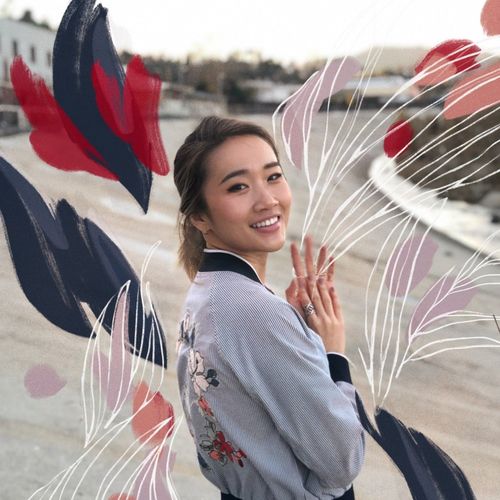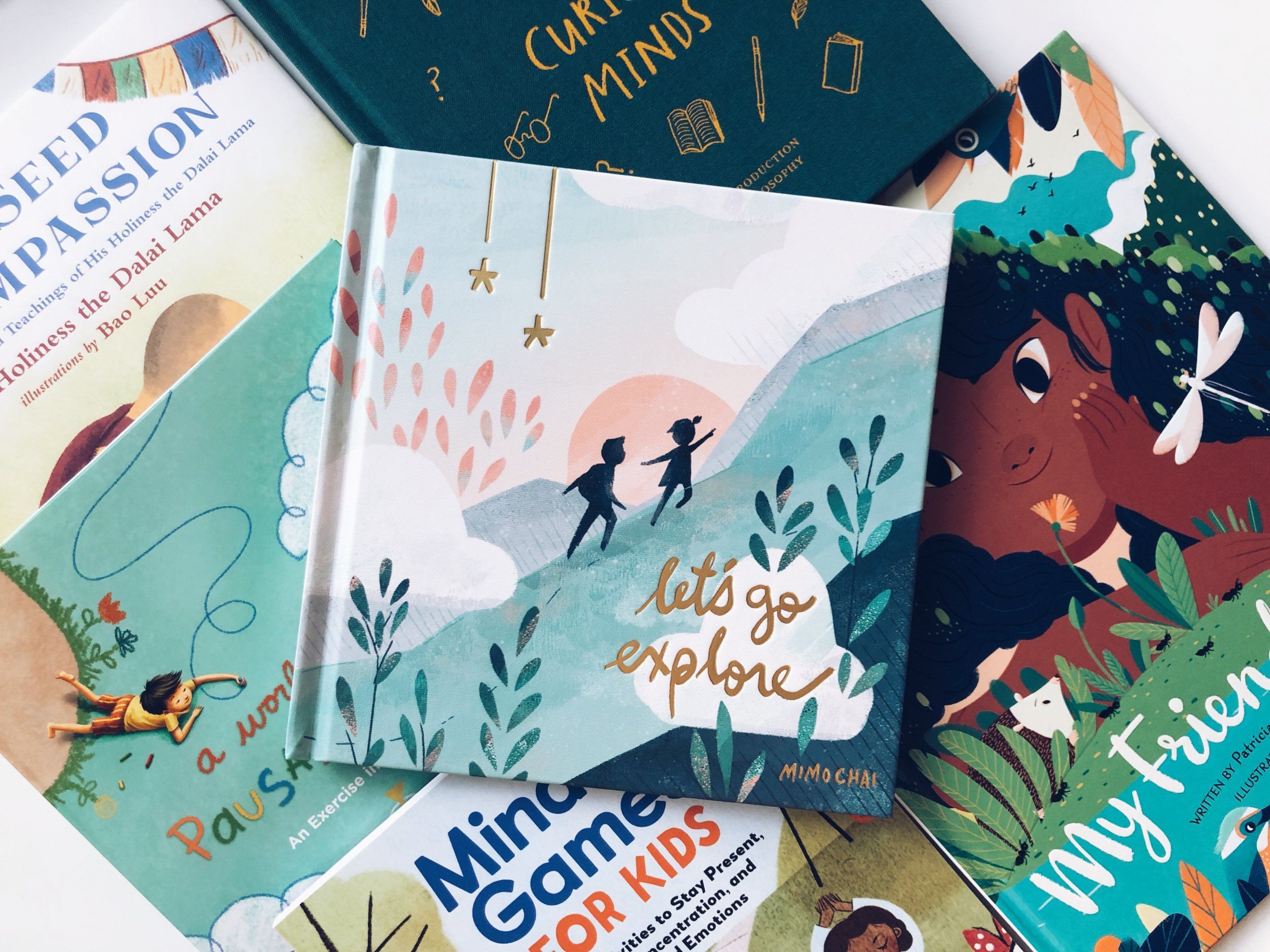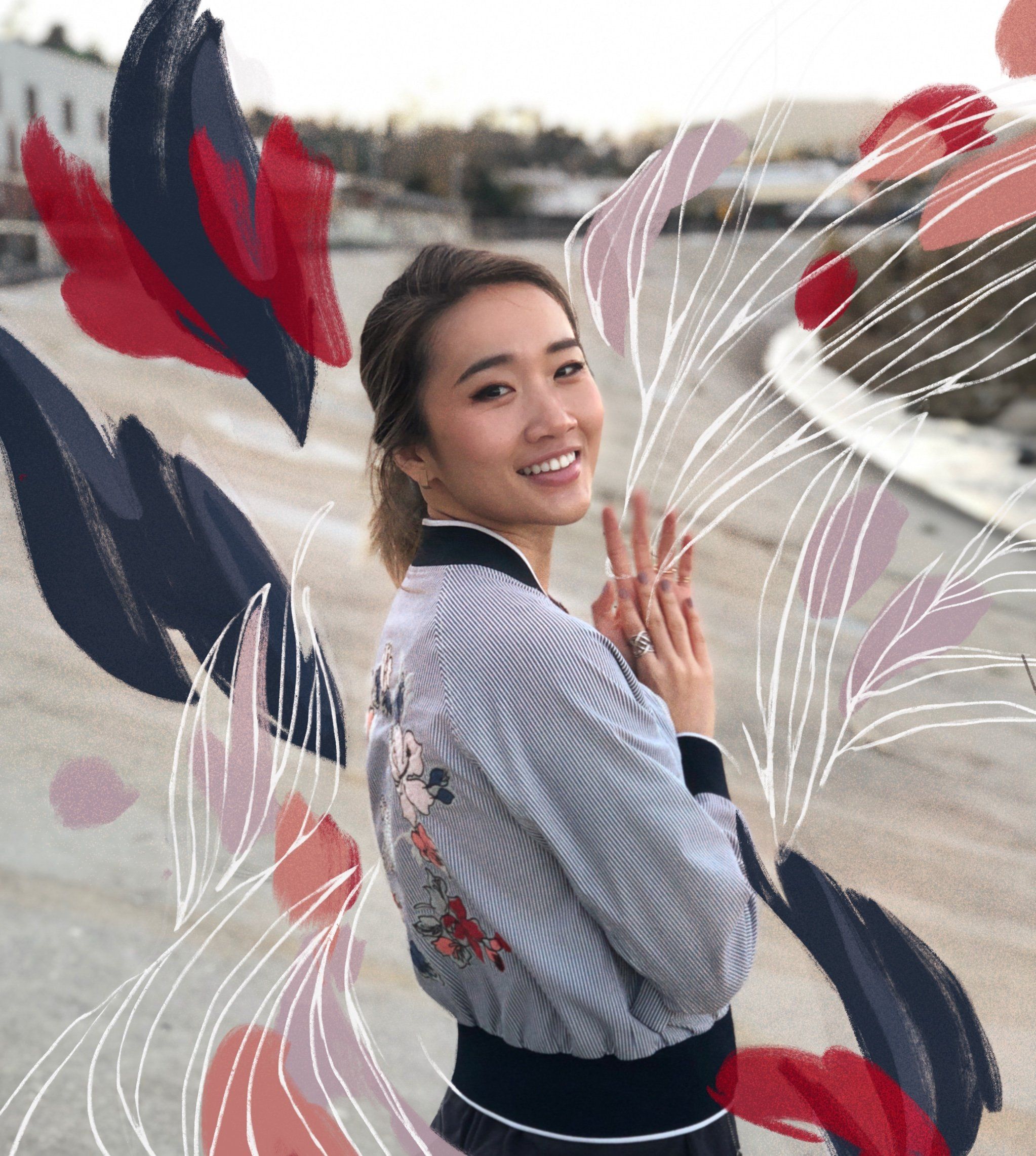
Mimi Chao is an artist and illustrator running her own studio Mimochai. Mimi has collaborated with the likes of Disney, Cubcoats, and Adobe. When not creating art, Mimi practices and teaches mindfulness and runs extremely popular Skillshare tutorials.
Hey Mimi, nice to meet you. Where are you based and how long have you been into art?
Hello and thanks for having me! I’m in Los Angeles, born and raised. I loved drawing as a kid, but I was discouraged from pursuing it so I had about a 15 year break. I started to take art seriously again about five years ago in 2015.
You used to be a lawyer. How long ago did you decide to jump into an art career and how was the transition?
That’s right, I decided to take the leap during my fourth year of working at a big law firm. It wasn’t a sudden decision—it took about two years of planning and reflecting before I left. I didn’t even know you could be a freelance illustrator at the time. I just knew I needed to at least try to find a more creative career. I first found a job at a digital design agency as a project lead, on the business and strategy side. It was there that I was exposed to the different kinds of creative careers you could have. It really opened my eyes! At the same time, I had started drawing again at night as a form of creative release. I posted some on Instagram (this was in its very early days) and that’s where it all really started. At some point I gained enough traction where I was working all day at the agency and drawing all night, so after some careful consideration I took my savings and gave myself six months to see where it could go. And now this is what I’ve been doing for the past five years, more or less :) I would say this is my dream job I didn’t know I was allowed to have.
The transition from lawyer to illustrator was of course very very challenging in terms of all the skills I had to teach myself. Dealing with people’s expectations was also difficult. However, in terms of emotional labor, it felt completely natural to me. It felt like this was what I was meant to do. And the project management and client relations skills I gained from law and the design agency continue to benefit me to this day.
I want to tell anyone on a similar path: you can do it. It’s possible.

While still being sophisticated, your work has a childlike wonder and whimsy to it. Is this deliberate and does it come easy?
I love how you described it. Yes I would say it’s deliberate in the sense that I want my style to reflect me. I love modern Scandinavian and Japanese design styles, as well as the aesthetic of brands like Aesop and the taste culture of Monocle. At the same time, I love picture books and animated films like Spirited Away. I suppose that’s all reflected in what I create.
However, it’s not deliberate in that I don’t have an exact vision of how I wanted things to look when I set out. It’s more that I have a feeling in mind, and it’s exactly like what you described. I would say my style has evolved a lot but the sentiments of my drawings have always been the same.
I wouldn’t say it comes easily. Even drawings that look very simple take a lot of skill to execute well. I learned that the hard way! There’s a fantastic quote by Ira Glass on it, just google “Ira Glass The Gap” as it’s a little too long to write here. But it’s so true: you have this vision in your mind of what you want your work to look or feel like, but it takes a lot of time and practice before reality meets expectations.
A lot of your work has a restricted palette. Why is this and do you enjoy placing restrictions around your process?
I like the cohesion of it. It also helps with my world building. It feels like everything belongs together even if I’m drawing in somewhat different styles.
I don’t like placing restrictions around my process from a principle point of view, I feel free when I create. However, I do like setting up a go-to color scheme. It might be the old lawyer and project manager in me: I like when things are orderly and follow a logic, even when it’s make believe :)
You’ve worked with some impressive clients. Do you find you approach commissioned work differently from work you produce for yourself or Mimochai?
Yes and no. That was a learning curve for me. When I was first starting out in freelance illustration, I took on whatever project I could get my hands on. I wasn’t very picky. And I found I really didn’t enjoy the work when I had to draw in a style that wasn’t me. Of course I still did it and appreciated the job, but it was something for me to notice about myself. I realize I have more of an artist mentality in the sense that I want to use illustration as a form of personal expression, rather than as a designer mentality which seeks to use different tools to solve a client’s problems with less emotional attachment to it. I know some illustrators are the other way around.
As I’ve gained more experience, I’m able to be more selective about working with clients who hire me for my style, and I in turn like what they’re doing. I love this kind of client work! For example right now I’m working on a picture book for one of my favorite gaming companies. I love their style, so to be able to do my interpretation of it is a dream. And the collaboration for Disney Villains was a great way to experience the high standards of working with a giant like Disney while still being my independent self. I mostly like working on my own thing, but it’s really rewarding to produce something through collaboration. And I learn a lot!
Mindfulness seems to be a big part of your life. What does it mean to you and do you find it helps your creativity and work?
I appreciate that you’ve asked about this. Mindfulness to me means (1) being fully aware (2) of what is happening in the present moment (3) in a gentle, non-judgmental way. It helps me be more present, be more grateful, and be more balanced.
It helps tremendously with my creativity and work. I think they go hand in hand. First of all, being mindful is all about being observant without judgment, which is a great trait for any creative to have. I’m constantly inspired and have never run out of ideas (knock on wood).
Second, I do my best work when I am happy and centered. One of the biggest internal challenges I faced when transitioning into illustration was this never-ending feeling of being unsatisfied with my progress, and never enjoying my current wins. As soon as I hit a goal that I had previously set out for myself (e.g. first paid job, first “real” client, first published book), I was already eyeing the next goal. I would always be critical of my own work and feel like I’ll never catch up to the artists I admire. My practice of mindfulness and meditation helps me realize I can be happy and satisfied right now. I can enjoy this moment. And now I do. That really makes a difference in enjoying the journey. Of course, it’s also especially helpful right now during the pandemic and craziness in the U.S.

We love kid’s books here at Procreate and notice you’ve illustrated and are now writing your own? What’s the most rewarding thing about being an author and illustrator?
Yes! I absolutely love beautiful picture books. I’m one of those people who loves to buy picture books even though I don’t have any kids yet. I think they’re really just a collection of some of the best illustration out there. And I love that the best illustrated stories are full of lessons adults really still need to learn. My favorite books are still Calvin and Hobbes and The Little Prince.
There’s just something so wonderful about being able to quickly and beautifully communicate a story to kids and adults, a story that might shape how they see the world or themselves.
From a more technical point of view, the most rewarding part is being able to be in control of everything from the characters to the environments to the experience. One of my favorite contemporary author-illustrators is Jon Klassen, and I remember there was an article where he compared picture book-making to his time working at an animation studio. At the animation studio, he was just one small part of a big machine, but when he wrote and illustrated his first picture book it was like getting to be the writer, director, cinematographer, story artist, character designer, the background artist, etc. all at once. I agree!
You have 50,000 students and counting through your Skillshare tutorials. Does teaching come naturally for you? And what is the most rewarding aspect of teaching?
I didn’t set out to be a teacher. But teaching comes naturally to me in the sense that I have a lot of empathy for people who are learning a new skill. I was and still am in their shoes! I explain things the way I would have liked it to be explained to me. I’m also able to address many of the questions and hard things beginners often run up against. I remember how it felt. So I am always encouraging and reminding students not to stress out about making it perfect, and not to compare themselves to all the artists they see on social media, because I had to work through similar issues.
The most rewarding aspect of teaching is being able to spark something in someone else. I love seeing student feedback that say things like they finished the tutorial feeling inspired to do something they thought they couldn’t do before. Or that I gave them some hope to try again after they were feeling discouraged. I love being able to shift someone’s perspective in a positive way. That really motivates me! Plus, I learned so much from others. I like the idea of paying it forward.

What is next for Mimi Chao?
My main focus right now is working on my next project for Mimochai, called CAMP. It’s a storybook, activity kit and workshop that shares a creativity and mindfulness practice (thus “CAMP”) with kids. I’m very passionate about this topic! The idea is to use illustrated storytelling to share these important lessons rather than a straightforward lesson book. I want to make it fun so that kids will actually want to learn it. I did a test run with my niece and nephew and they totally got it. Now they meditate on their own! So that is very inspiring. I hope to make a version for adults one day.
I’m also in the middle of helping a client pitch an animated show to the network studios, so that is keeping me on my toes.
What’s your favorite Procreate feature, and what do you enjoy about using it?
I really just love the thought and care that was put into designing the user experience of Procreate. You can really feel it. It’s so easy and intuitive yet powerful and professional. I still don’t know how Procreate stores so many files AND the Time-lapse feature while taking up so little memory on my iPad.
I appreciate Procreate’s approach to business and development. It’s really admirable that Procreate constantly ships out updates, and that the updates are both awesome and free. The cost of entry is so low and has made digital painting accessible to everyone. The community Procreate is now building is also so down-to-earth and encouraging. It’s reflective of the company, and it is so refreshing. And Procreate never brags about any of this, they just do it.
Ok to specifically answer your question: If I had to pick one thing I couldn’t live without, it might simply be the Shale Brush!
If you could add one feature to Procreate what would it be?
Adjustment layers! Although the new pencil filters are a nice step in that direction.
Discover Mimi’s beautiful work on her Instagram @mimizchao and @mimochai plus more work and thoughts at mimi-chao.com and mimochai.com. You can also discover Mimi’s tutorials over at skillshare.com/user/mimichao
Mimi’s next Skillshare LIVE workshop: Illustrating with Character is on Friday Oct 23, 12PM PST/3P EST. Join up at skl.sh/procreate_live before the 23rd and receive a free exclusive Procreate brush pack plus a 2 month Skillshare trial.